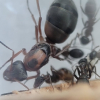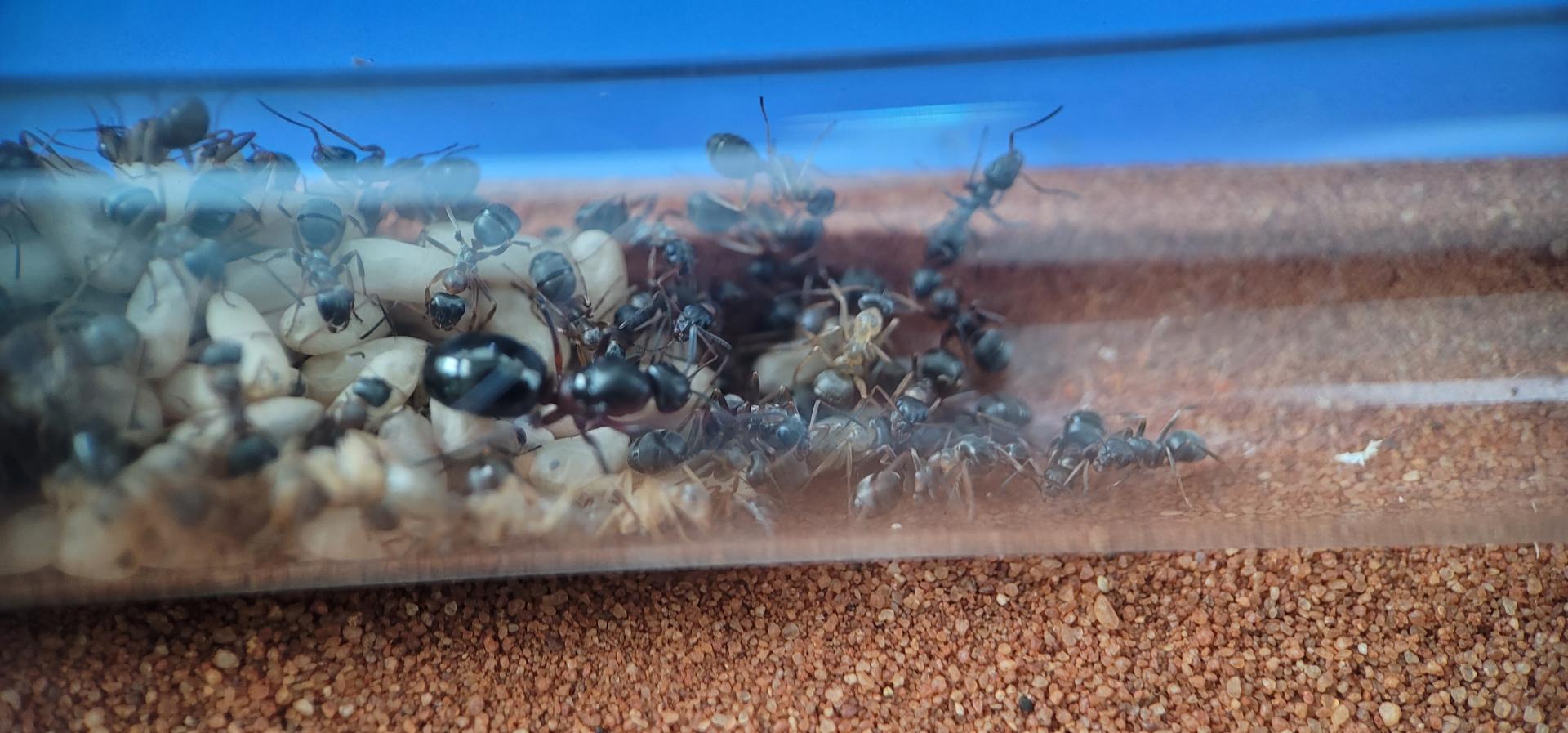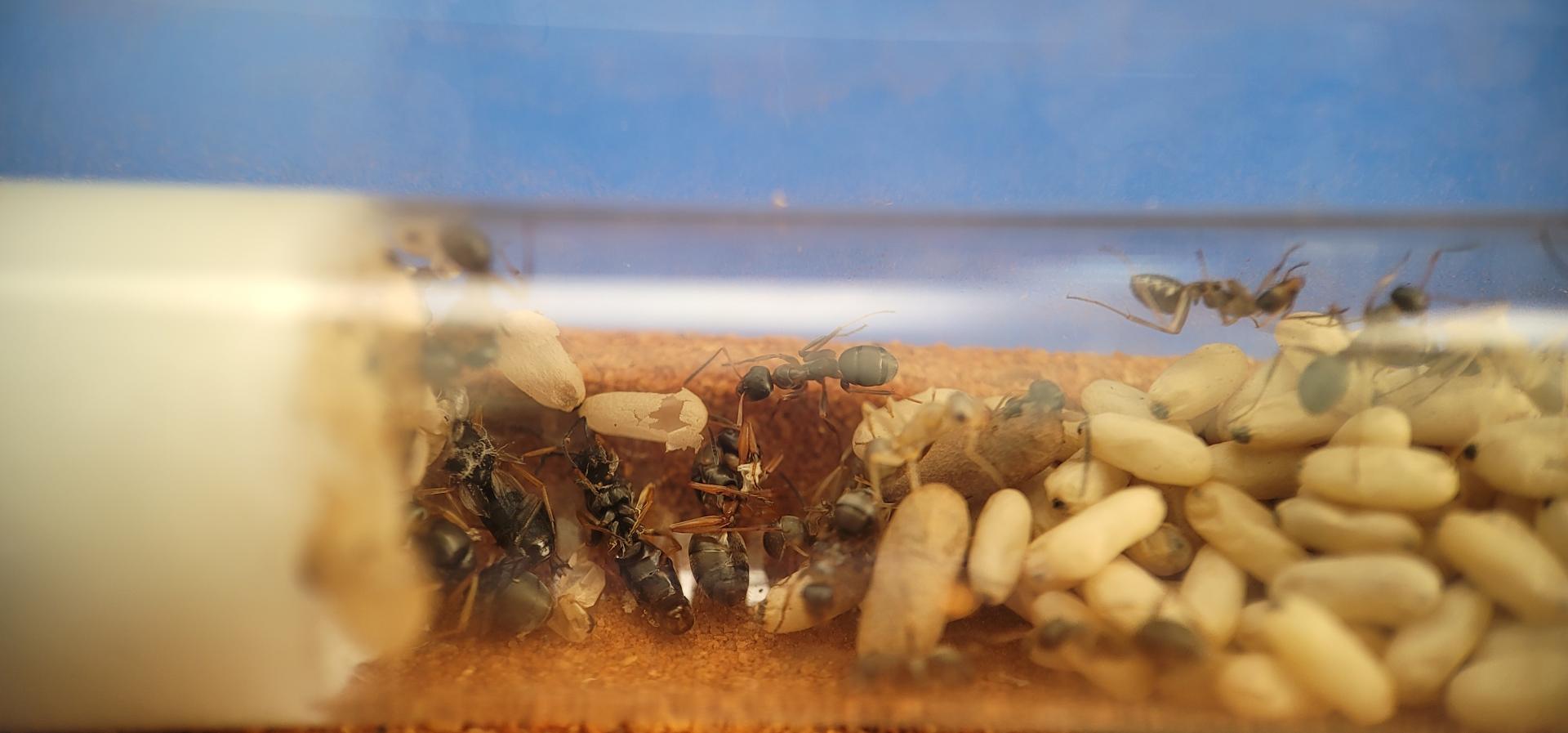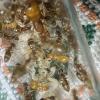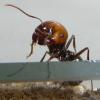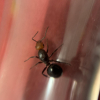Hello and welcome on this new journal of mine,
Here i will try to keep up with the young Queen of Formica Rufa i have established this summer.
She has been introduced to a local serviformica i have yet to identify, either formica cunicularia or cinerea. The id wasn't conclusive but would go towards Cunicularia.
For those who are not familiar to Formica Rufa, they are well established European species and i think sparsely in North America. So called wood ants, the queens have a tough way to start of if they don't find they way back to the home colony. I am not scientific so i will only express what i have learned so far and experienced my self. I have kept a wild caught Formica Polyctena who sadly did not survive hibernation 2 years ago. For founding stage if as said the queen isn't brought back to the home nest she has to find a suitable host colony of Serviformica infiltrating her by masking her own smell with the pheromones she gathers on the hosts foragers, mostly agressive those foragers won't stay a chance to survive if alone that being said there is also a big chance for the queen to be rapidly overwhelmed by said hosts if for example she got to near from the nest or any uncountable variables.
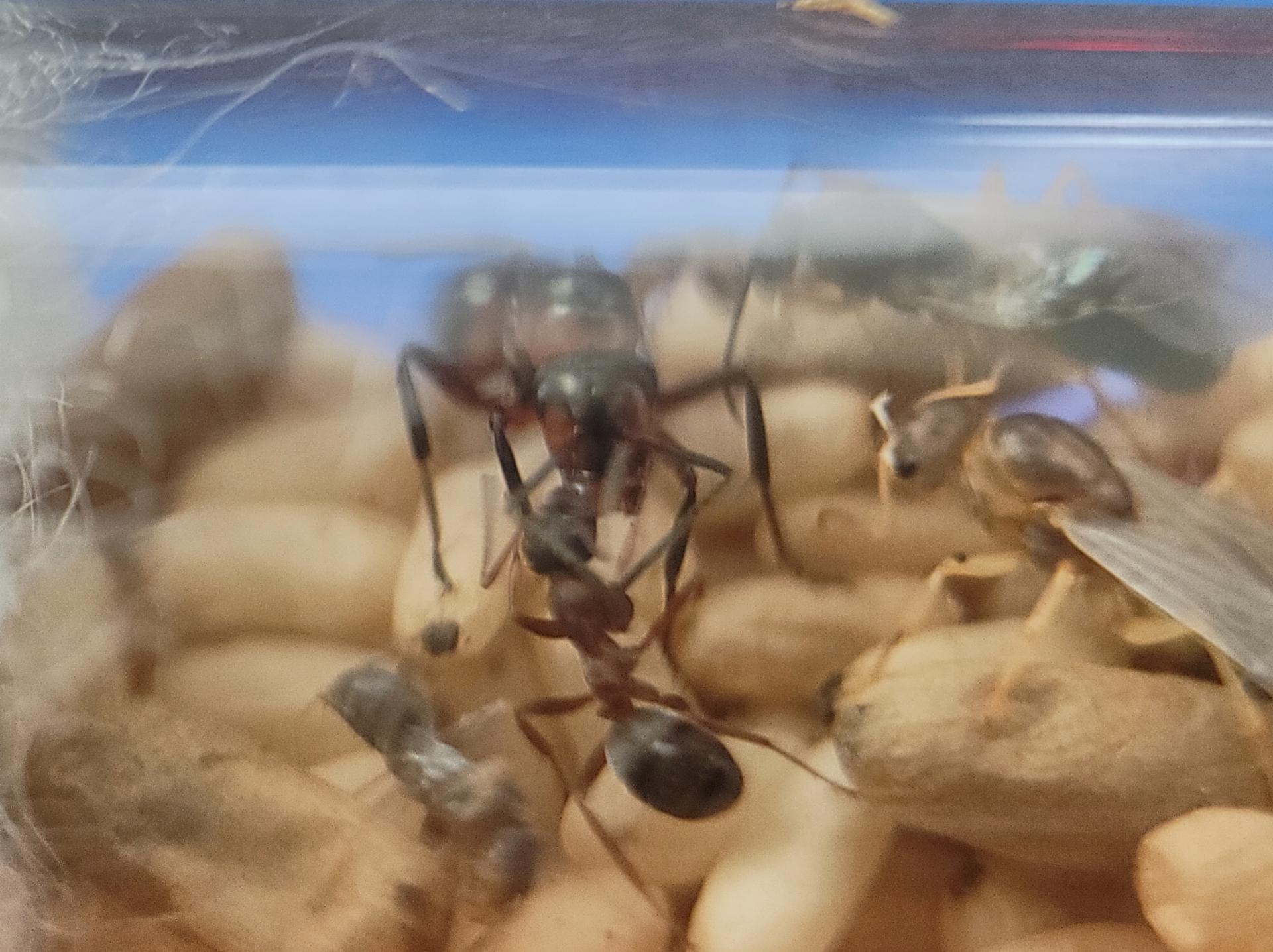
(Yes the serviformica colony was well established and i gave her some alate pupae ...)
In my case i didn't have any established serviformica colony where i could have watched how she would take over the colony by killing the resident queen and to be honest i wouldn't keep a colony to offer her queen as a sacrifice either. I have at my disposal a nice garden, mostly inhabited by Lasius, Myrmica, Tetramorium and Solenopsis. About 10 or 15 Years ago being a child i watched all ants present in the garden and clearly recall observing some formica nest counting one only, but they vanished completely for a decade at least, 3 years ago i found a formica foraging around the flowers. Being a great "FAN" of formica i immediately got exited to see an ant i havent seen in my garden for such long time (i must say i just came back from 6 years living 60km from here) so i did what any ant enthusiast does at that point, tracking her way and looking for other foragers. After couple of days i did find the nest seamless hidden in grass and got back to my child behavior i used to better watch those colony's, what was that behavior of mine ? place a clay tile above the nest to use as heat collector which works perfectly, one week later looking beneath the tile they had already dug chambers to store pupae and mature larvae. That was for me a splendid discovery, finding out that one ant species that absolutely disappeared from my garden came back and was already that well established, i mean those girls where al over the place once i just touched the clay roof tile. I got euphoric for at least 3 days carefully watching the nest because as for now the only species that would inhabit the garden and take over every place give was an old Lasius emarginatus colony (when i say old they had a dump place in the cellar where the piled up all trash for years) those ants took over pretty much any species that would try to start a nest around the house. So i kept a close watch over the formicas and did my best to slow the lasius colony starting from spring (yes i did use poison locally to reduce their numbers, which actually worked and obviously didn't hurt to much as they are still pretty active) the formicas did well over spring, lot of brood and adults.
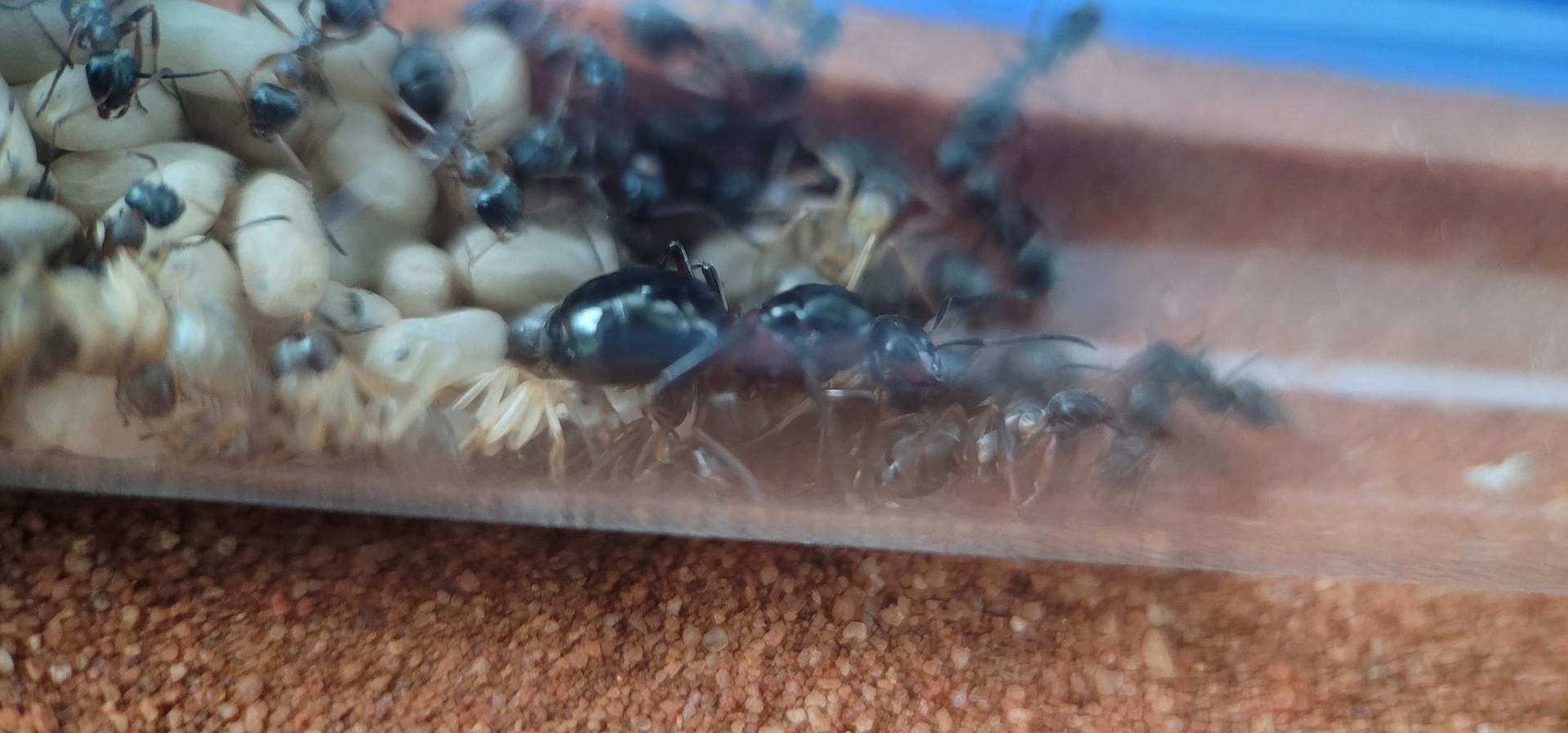
So i had my best shot at starting a new parasitic Formica colony on my own, before receiving the Rufa queen i caught about 50 pupae and 20 workers, set them all up in a test tube and nourished them slightly. Once the queen arrived i placed the serviformicas in the fridge to calm them down, then introducing 5 workers one by one to my Rufa queen. The first Encounter got rough, but the queen got the uper hand and subdued the first worker allowing me to introduce the second worker which did not attack the Rufa queen, having her now with 5 workers i then saw some cleaning and one trophalaxie which for me meant that she was adopted and recognized as the new queen allowing me to introduce them to the other workers and brood. I settled them a tubs and tubes setup with the original test tubes and a new segmented grouted larger test tube which they choose in a matter of hours.
After two week i saw the first batch of eggs, but the conditions i gave them to not disturb them in any way didn't give me any proper sight of the process and i couldn't identify correctly if the colony had any biological workers. I now estimate that they are about 15 Rufa workers, but it was already late in the summer and they tend to stop any development at that point.
This is so far what i have accomplished with my Rufa queen, i still have to find her a name but i want to wait next spring hoping she will get through and establish her small imperium
Long live the Queen
Edited by Katla, March 18 2023 - 12:31 PM.


